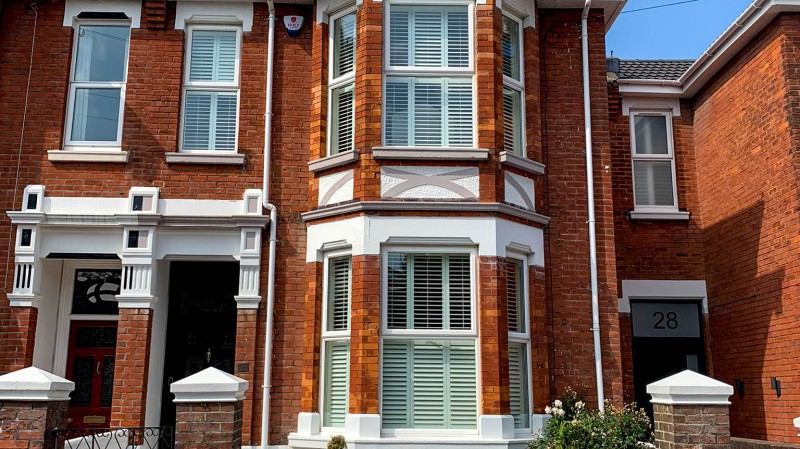You are here: How do I Extend my Mid-Terrace House
During the Covid-19 pandemic, many of us were directed to work from home rather than attend our usual place of work, where we were in danger of either spreading or contracting the virus. So, work from home it was, but where? Kitchen or dining room table was fine in the short term but was far from ideal, especially if the household included young children, who were either not of school age or were home schooling. That being the case, many spare bedrooms were pressganged into acting as the home office, assuming of course that a spare bedroom was available. What spare room, I hear you ask. Spare, describes something that we don’t need or don’t use and not many of us have that luxury.
Two other things happened during lockdown, house prices soared in many areas and children were born and we all know that larger families mean larger homes. These facts coupled with the ‘work from home’ directives put a real strain on the seams of our homes and the need for more space became a reality in many households.

Moving house is an expensive, stressful exercise at the best of times, so many householders started to think seriously about building an extension to their existing property. No having to find a new home – no need to find a new school for the kids – no having to make new friends. Just sit tight and build an extension.
Building an extension on a detached or semi-detached house can be relatively easy, but what about a mid-terraced property. Mid terraced means that your property is attached to your neighbour’s property at both sides and that brings the potential for more Party Wall issues.
The Party Wall Act is legislation which applies in England and Wales and is designed to pre-empt any development related disputes between neighbours which presents a clear legal framework for managing any disputes which could arise.
The Party Wall act prevents building work by one neighbour that can undermine the structural integrity of shared walls or neighbouring properties. Before considering any Party Wall issues, it would be advisable to consult with a Party Wall Surveyor,
Being a mid-terraced property may also present problems of access to the rear of the property if there is no formal access, such as a lane, to give you rear access. Thankfully, many terraced houses have a lane at the rear of the property which gives vehicle access to the rear and would allow building materials to be delivered to the site. If this was not the case, building materials for a rear extension would need to be delivered to the front of the property then craned over the terrace to the back garden. This would require the hiring of a large capacity crane, which would be expensive and the permission of neighbours to crane the loads over their property. It may also require permission from your local authority to close the road in part or in full during the craning exercise. You would also need to consider if you could lift all the materials required at the same time to minimise the cost and inconvenience. All of this would tend to make a rear extension to a property with no direct vehicle access to the back garden, a very difficult and expensive exercise.
The main options to extend a mid-terraced property, assuming rear access, would be to extend upward to create a loft extension, ideal for an extra bedroom, a home office or to build out to form either a single story or two story rear extension.
A high percentage of terraced houses are designed with the rear of the building not taking up the full width of the site, leaving an area of ground to the side of the house. This would give the opportunity to extend into this side area to widen the kitchen or to form a space for working from home.
Depending on the extension you have in mind, Planning Permission may not be needed, you may be able to build under Permitted Development, provided you build within certain guidelines.
An attic conversion for your terraced house can be considered Permitted Development, provided certain limits and conditions are met. To be classed as Permitted Development
- Any additional roof space created must not exceed 40 cubic metres for terraced houses. Bear in mind that any previous roof space additions must be included within this volume allowance, even if you did not create this previous space
- You cannot extend beyond the plane of the existing roof slope of the elevation that faces the road.
- Materials should be similar in appearance to the existing house.
- No part of the extension can be higher than the highest part of the existing roof.
- Verandas, balconies or raised platforms are not permitted.
A single story extension to a terraced house may also be built under Permitted Development, provided:
- It projects no more than 3 metres beyond the rear wall of the original house.
- Must not exceed 50% of the total garden area.
- Has a maximum ridge height of 4 metres.
- Has a maximum eaves height of 3 metres and must not exceed the existing eaves height
- Materials should be of similar appearance to the existing dwelling.
- Must not include a veranda, balcony or raised platform.
- Must not exceed the height of the existing dwelling.
Before assuming Permitted Development rights, always check with your Local Authority planning department.
Two storey rear extensions on terraced houses usually require planning permission.
In many cases, planning applications are rejected because a two storey extension close to neighbouring houses can significantly harm the living conditions of neighbours through overshadowing, loss of privacy, or dominance.
A two story extension, which offers the opportunity to add another bedroom/study on the upper floor, while creating an extended living space on the ground floor, would have a lower cost per square meter than a single story extension as the groundworks costs would be split between the two stories.
When deciding on your extension, the need for planning permission should not be the overriding factor in the decision on what your project is going to look like. Whatever you decide to build, you are going to have to live with for the rest of your stay in that property. The cost of a planning application, taken in the scheme of things, is not high and if you employ a good architect to help you, the process should not be too onerous. Therefore if the restrictions imposed by Permitted Development would stop you from being able to achieve what you want to from your new space, do not be put off by applying for permission.
Building an extension, whether attic or rear, is not something most of us would be experts in, so talk to those who do this for a living. Bring on board an experienced architect or builder, ask to see photographs of his or her previous projects, take their advice and be open to new ideas. If in doubt about regulations, check with your Local Authority planning office and remember to check with your architect or builder that you are complying with building regulations.
If you are looking to make some home improvements, you may find some of these services useful
Builders
Find local help with a building project
Building Regulations
Find details of local experts who can help with Building Regulations
Architectural Design Services
Find local Architectural Design experts
Structural Inspections
Find an expert to carry out a structural inspection
Building Surveys
I want a local surveyor to do a Building Survey for me
Choose which Architectural service you require
If you are not sure which service you require, check out the options available...


